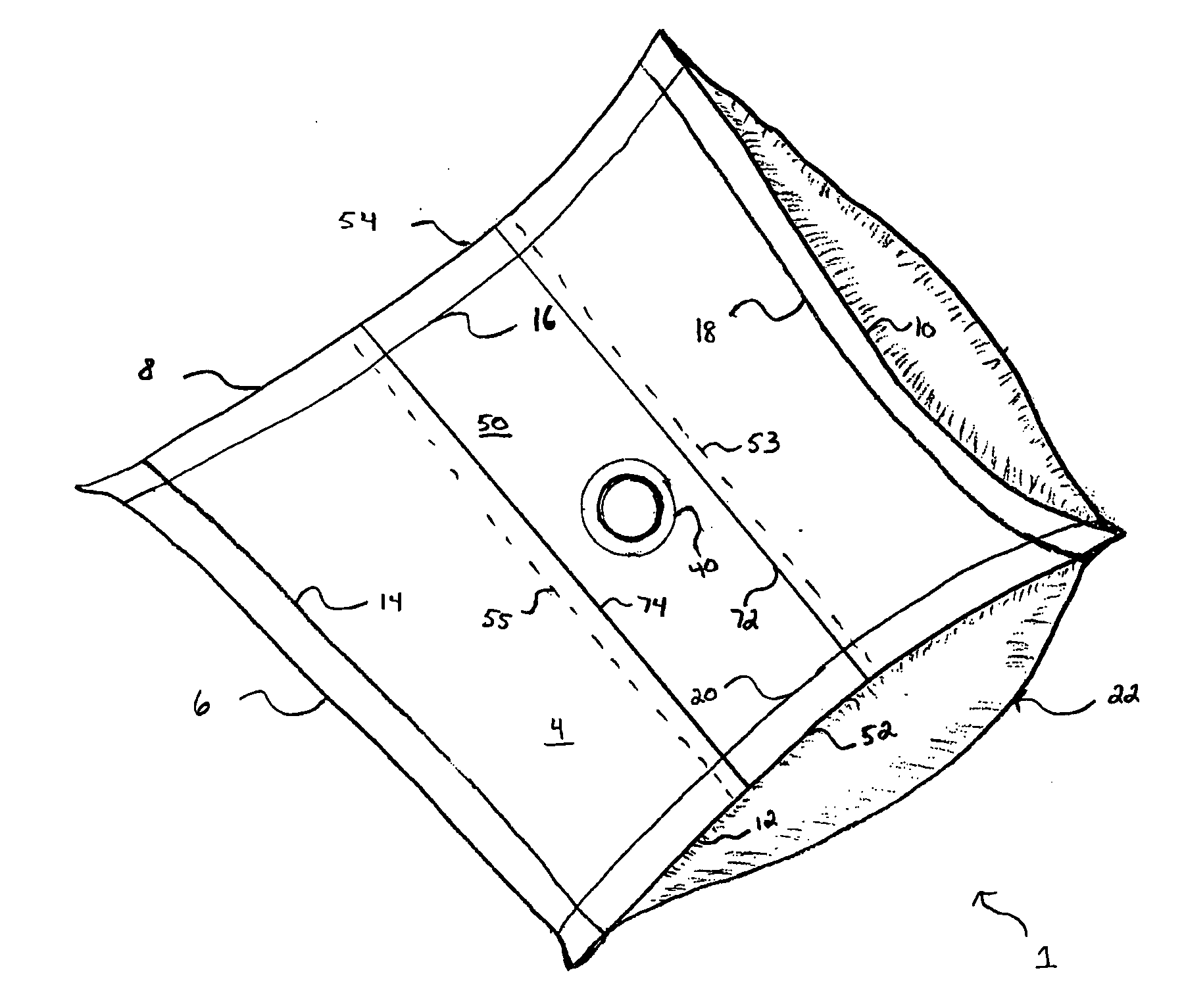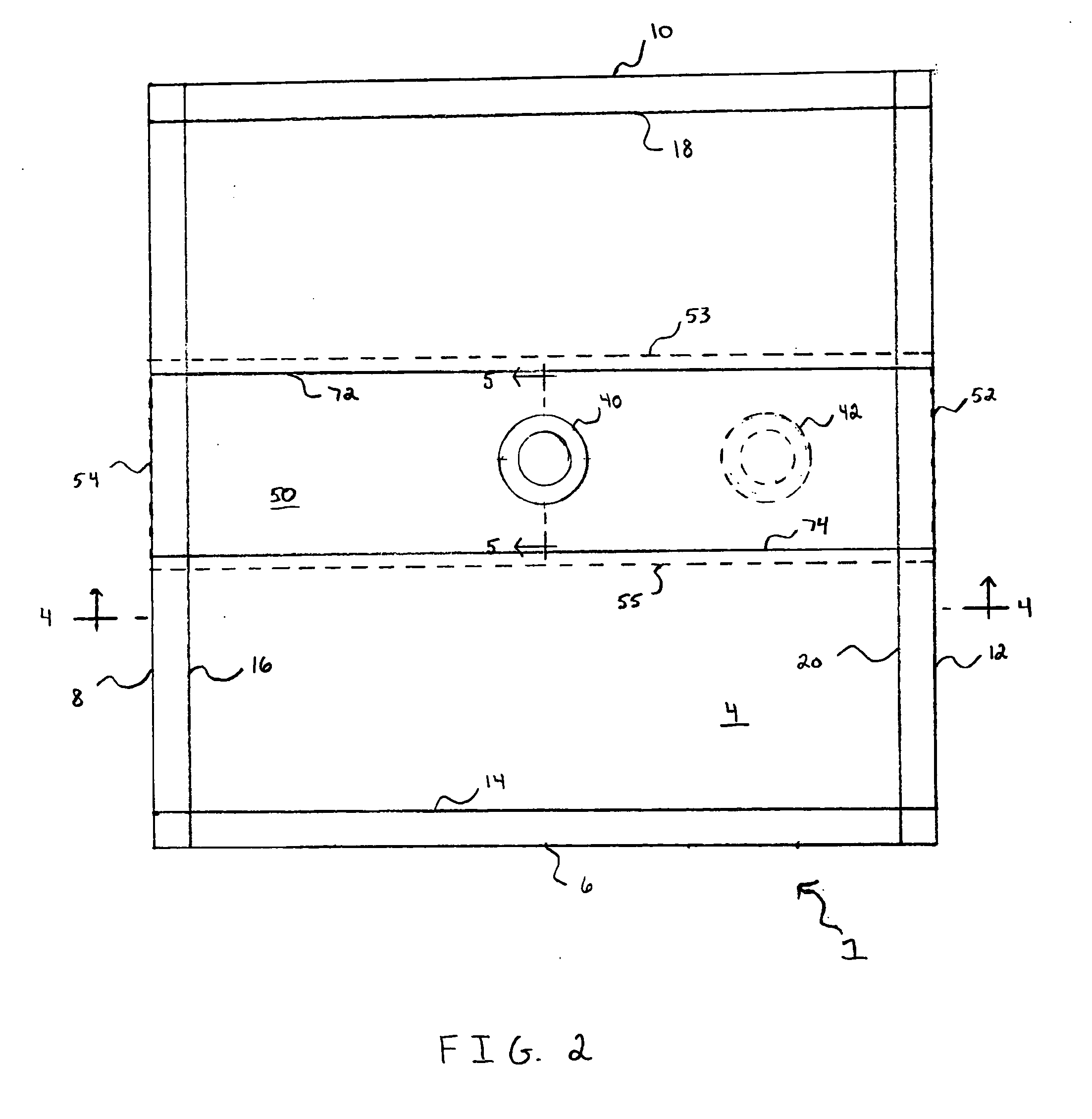Flexible liner for FIBC or bag-in-box container systems with improved flex crack resistance
a flexible liner and container technology, applied in the field of flexible liners, can solve the problems of reducing the structural and/or barrier properties of the liner, affecting the flex crack resistance of the top half of the liner, and affecting the flex crack resistance of the liner
- Summary
- Abstract
- Description
- Claims
- Application Information
AI Technical Summary
Benefits of technology
Problems solved by technology
Method used
Image
Examples
Embodiment Construction
[0024] The present invention is directed to a flexible liner 1 for use in bulk containers such as those used in flexible intermediate bulk container (“FIBC”) systems or bag-in-box container systems. While certain liner embodiments are discussed herein, the particular liner configuration is generally not important to the present invention, and instead, any suitable liner configuration may be used. As will be discussed more fully below, the liner comprises a top portion and a bottom portion. The top portion and bottom portion are sealed together to form a pillow shaped liner. More specifically, longitudinal edges and lateral edges of the top portion and the bottom portion are sealed together.
[0025] In one embodiment, the top portion is composed of additional plies as compared to the bottom portion. This helps to reduce the susceptibility of the top portion to flex crack failure. This is because each ply has its own flex crack failure rate, and as the number of plies is increased, the...
PUM
 Login to View More
Login to View More Abstract
Description
Claims
Application Information
 Login to View More
Login to View More - R&D
- Intellectual Property
- Life Sciences
- Materials
- Tech Scout
- Unparalleled Data Quality
- Higher Quality Content
- 60% Fewer Hallucinations
Browse by: Latest US Patents, China's latest patents, Technical Efficacy Thesaurus, Application Domain, Technology Topic, Popular Technical Reports.
© 2025 PatSnap. All rights reserved.Legal|Privacy policy|Modern Slavery Act Transparency Statement|Sitemap|About US| Contact US: help@patsnap.com



